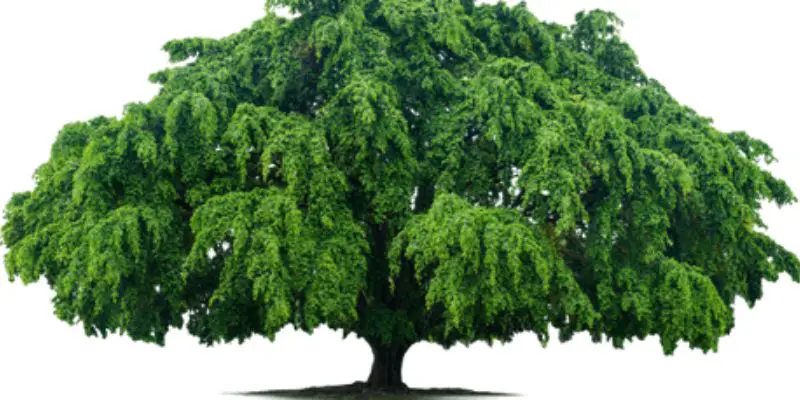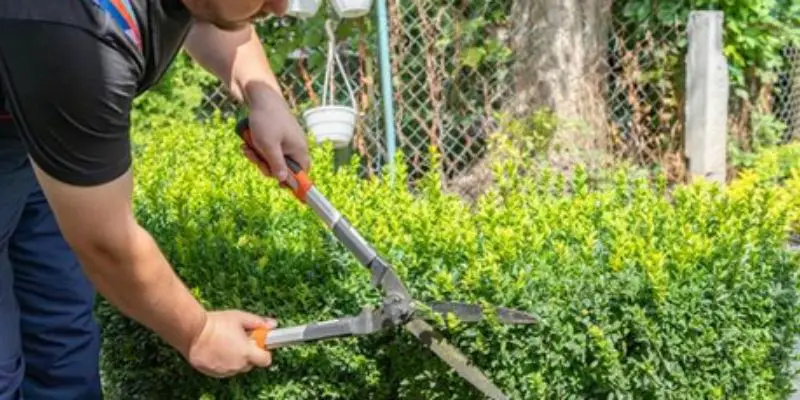Willow trees are prized for their graceful, flowing branches and ability to thrive in wet conditions where other trees struggle. However, without occasional pruning and shaping, willows can quickly turn from an asset into an unruly liability. Learning how to properly trim your willow tree is essential to maintaining its beauty and health over time.
In this comprehensive guide, you’ll discover expert techniques for trimming and shaping willows. With over 15 years of experience as an ISA Certified Arborist, I’ll share critical tips on tools, timing, branch selection, and disposal to help you tame your willow into a stunning landscape specimen. Whether training young trees or rejuvenating overgrown ones, this guide has everything you need to understand how to trim willow trees.
Introduction to Trimming Willow Trees
Willow trees grow rapidly, adding as much as 8 feet or more in height each year. This fast growth often leads to tangled branches and dense foliage that blocks light penetration. Strategic pruning stimulates new growth by removing problematic limbs and opening up the canopy.
Trimming improves the overall form by eliminating crossing branches, while thinning congested areas helps prevent disease and decay. Pruning also rejuvenates older trees by cutting back long, Heavy branches weighing down the canopy. With their strong regeneration abilities, willows tolerate aggressive pruning that would damage most other species.
When learning how to trim willow trees, it’s important to prune at the right times using proper techniques to avoid stressing the tree. This guide will cover everything from timing considerations and essential tools to cutting methods and cleanup. Follow these expert willow pruning tips to maintain a thriving, attractive tree.
When to Trim Willow Trees
Pruning willows at the wrong time can limit vigor or allow disease to enter through cuts. Here are the optimal timeframes:
1. Spring Pruning
The best time for structural pruning is late winter or early spring before growth resumes. The bare branches make it easier to assess form, and the tree can immediately focus energy on closing wounds when growth begins.
2. Summer Pruning
Light maintenance pruning can be done anytime during summer. But avoid heavy pruning during hot, dry weather which could stress the tree.
3. Fall Pruning
You can perform light thinning and detail pruning after leaves drop in autumn. But major corrective pruning is best saved for early spring.
Avoid Winter Pruning
Pruning during dormancy exposes willows to decay and canker infections. Delay pruning until just before spring growth starts.
While willows are adaptable, you’ll get the best results by pruning during optimal conditions. Now let’s go over important tools to have on hand.
Essential Pruning Tools
Having sharp, well-maintained tools is critical to proper pruning. Dull blades cause jagged cuts that resist sealing. Here are some essentials:
Bypass Hand Pruners
Perfect for smaller stems up to 1 inch diameter. The scissor-like blade makes clean cuts.
Loppers
For cutting branches 1-3 inches thick. Long handles provide leverage and reach.
Pole Saw
Essential for high branches. Get one with at least a 10 foot reach.
Chainsaw
Needed for large limbs over 3 inches. Use a chainsaw with a 14-16 inch bar length.
Safety Gear
Wear gloves, eye protection, ear plugs, and a hard hat when operating a chainsaw or working overhead.
Invest in quality tools and keep blades sharp for easy, clean willow pruning. Now let’s go over smart branch selection.
How to Select Branches for Trimming
It’s crucial to know what types of branches to remove when trimming willows. Here are some guidelines:
Remove Broken, Damaged, and Diseased Limbs
Cut out branches with cracks, decay, or canker infections to prevent further spread.
Eliminate Crossing/Rubbing Branches
Branches that rub together eventually cause wounds, so space branches properly.
Cut Outward-Facing Limbs
Remove branches aiming outwards from center for better form.
Shorten Overly Long Branches
Cut back branches that become disproportionately long to balance shape.
Thin Out Congested Areas
Selectively remove twigs and shoots to open up dense areas to light and air circulation.
Cut Water Sprouts
Prune fast vertical shoots that sprout from the trunk to direct growth outward.
By targeting specific types of branches for removal, you can reshape your willow while eliminating potential problems. Next I’ll explain proper cutting techniques.
How to Make Proper Pruning Cuts
Making the correct types of cuts helps trees heal rapidly. Follow these rules when trimming:
1. Prune Just Above Leaf Buds
Angles cuts just outside dormant buds so new growth hides cuts.
2. Cut Back to Lateral Branches
Removing entire branches leaves stubs. Instead, cut back to laterals.
3. Use Thinning Cuts on Dense Areas
Rather than heading cuts, use thinning cuts to remove entire shoots down to the branch collar.
4. Avoid Topping or Shearing
Never flatten the top or shear the sides, which destroys the natural form.
5. Disinfect Tools Between Cuts
Clean tools with diluted alcohol to avoid spreading disease between cuts.
By using proper branch selection and precision cuts, you can direct growth while minimizing stress. Now let’s go over training young trees.
How to Trim Willow Trees – Trimming Young Trees
It’s much easier to establish good structure early through pruning young willows properly. Here are some key tips:
1. Select a Central Leader
Choose one main upright stem and remove competing leaders to establish dominance.
2. Eliminate Narrow Crotch Angles
Wide branch angles add strength. Narrow crotches are prone to splitting.
Space out Scaffold Branches
Leave 6-12 inches between branches to allow each one to grow robustly.
Maintain Ideal Clearance
Prune lower branches once higher ones grow to 6-7 feet for lawn mower clearance.
Remove Suckers
Cut unwanted shoots sprouting from the roots to channel growth into the main tree.
With frequent pruning for the first 3-5 years, you can train young willows to grow into mature specimens with excellent structure. Now let’s go over rejuvenating overgrown trees.
How to Rejuvenate Overgrown Willow Trees
Older willows often become overgrown and congested. You can restore their vigor through rejuvenation pruning:
Cut Back Long, Heavy Branches
Removing the largest limbs down to 12-24 inches long will stimulate bushy new growth.
Thin Dense Foliage
Let light penetrate by selectively removing twigs and shoots in crowded areas.
Remove Root Suckers
Suckers emerging from the roots siphon energy away from the main tree.
Gradually Restore Height
Allow new shoots to grow for a year before cutting back again. Continue thinning annually to shape new growth.
Disinfect Tools Frequently
Prevent disease transmission by cleaning tools with diluted alcohol after each cut.
With some trees, severe pruning may be needed initially to spark new growth. Gradually reduce pruning severity as the tree regenerates.
Willow Trimming Maintenance Schedule
To maintain an attractive shape long-term, aim to trim your willow annually:
First Year
Initially prune heavily to train young trees or rejuvenate older ones.
Second Year
Prune lightly to shape new growth from the first year.
Following Years
Do light annual pruning during dormancy to maintain form.
As Needed
Remove damaged branches immediately regardless of season.
Trimming lightly but frequently prevents excessive growth between prunings. Now let’s go over cleanup.
Willow Pruning Cleanup
Because willow branches don’t self-prune, pruning generates lots of debris. Here are some tips for cleanup:
Chip Small Branches
Use a woodchipper to break down trimmings up to 3 inches thick into mulch or compost.
Remove Large Branches
Transport logs that are too big for chipping to a landfill or burn if permitted in your area.
Scatter Chips on Site
Spread chipped branches as mulch beneath the tree to return nutrients to the soil.
Disinfect Tools
Clean tools with diluted alcohol after use to remove any disease organisms.
Proper cleanup after trimming willows helps keep your landscape looking neat while protecting tree health.
Conclusion
Learning how to trim willow trees is essential to maintain their stellar qualities of graceful form and rapid growth. By pruning strategically using the right techniques and tools, you can eliminate problem limbs, open dense growth, and restore vigor. With this guide’s expert tips for timing, branch selection, cuts, and cleanup, you can confidently tame your willow trees into showstopper landscape specimens.
Learn everything you need to know about how to trim willow trees properly. This comprehensive pruning guide provides expert techniques to tame overgrown willows into stunning landscape specimens.

Michael Glenn is a certified arborist and horticultural expert with over 15 years of experience in the landscape industry. His passion for plants and trees has led him to become a sought-after authority on pruning and trimming techniques. Glenn’s in-depth knowledge of proper pruning methods, timing, and tools has helped countless homeowners and professionals maintain healthy, aesthetically pleasing gardens and landscapes.
In addition to sharing his pruning expertise through practical tips, step-by-step guides, and expert advice, Glenn is also a respected author of pruning tool buying guides. His comprehensive reviews and comparisons ensure readers can make informed decisions when investing in quality loppers, pruning shears, saws, and other essential equipment. With a deep understanding of plant biology and sustainable practices, Glenn’s writing empowers audiences with the knowledge needed to properly care for green spaces.





